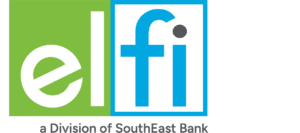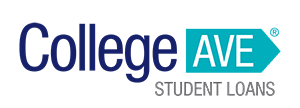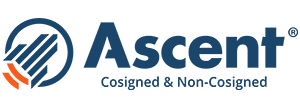As a new college graduate, you’re likely excited to start your first job and move out on your own. But have you thought about managing your finances?
According to the National Association of Colleges and Employers, the average starting salary for college graduates was $50,944 in 2018. That may sound like a lot of money, but you’d be surprised how quickly that money can disappear. Between taxes, student loan payments, and essentials, your salary can dwindle rapidly.
Learning how to budget is key to managing your finances and paying down student loan debt. If the process seems too complicated, continue reading to learn how to make a budget (painlessly!).
How to create a budget in 5 steps
You don’t need fancy software or apps to create a budget. In fact, you can use a simple spreadsheet like the one we created to get started. You can customize it and add to it so it meets your needs, and update it as you go. It can be downloaded for free, below.
When thinking about how to make a budget, follow these five easy steps to get started.
1. Add up your monthly income
First, add up all of the income you make each month after taxes. Include earnings from your full-time job and any side hustle income you may have. If you have other sources of income, such as alimony or help from your family, list that money, too. Your total is how much money you have to work with each month.
2. Review all of your expenses
Next, list all of your expenses. Make sure you include:
- Housing: Housing is likely your biggest expense. As a general rule, you shouldn’t spend more than 30 percent of your income on your rent or mortgage payments. That means if you make $4,000 per month, your rent shouldn’t exceed $1,200.
- Utilities: Consider how much you spend on electricity, water, cable, internet, and garbage or sewer fees. According to move.org, apartment dwellers should budget at least $200 per month for utilities.
- Groceries: Allocate money for groceries, including coffee, meals, and snacks. The Bureau of Labor Statistics reported that the average person spends $4,464 per year on food consumed at home, or $372 per month.
- Eating out: If you like to go out for dinner or drinks with friends, set aside some money each month to cover this expense. Because dining at restaurants or bars can be expensive, try to limit your spending in this category.
- Clothes: You’ll likely need to spend some money each month for clothes for work and for your personal life. If you have a good foundational wardrobe, you’ll only need to spend a little to update your wardrobe each season or to replace worn-out items. According to the Bureau of Labor Statistics, the average person spends $1,866 on apparel and services, or $156 per month.
- Phone: If you have a smartphone, you can expect to pay $35 to $150 per month for service, depending on the phone you have and the data plan you select.
- Car payment: If you can’t rely on public transportation, you’ll need a car. That means you’ll probably need to take out a car loan. According to Experian, the average payment on a used car is $391.
- Car insurance: If you own a vehicle, you need car insurance. The Zebra reported that the average cost of car insurance is $1,502 per year, or $125 per month.
- Healthcare: Even if you are on a company-sponsored health insurance plan, you’ll likely have to pay a monthly premium and cover the cost of your deductible and any copays. Health insurance could cost you between $200 and $500 per month, depending on your plan.
- Entertainment: Make sure you budget for entertainment, such as going to the theater or streaming services like Netflix or Hulu.
- Student Loans: Your student loans likely eat up a big portion of your income. According to credit.com, the average monthly student loan payment for graduates is $393.
- Savings: Even if you feel comfortable financially, try to set aside a little money each month into an emergency fund. You can start with as little as $25 or $50,but work up to setting aside 10% to 15% of your income.
- Retirement: It’s also important to start saving for retirement. You can start small, but as your income grows, increase your contributions until you’re saving at least 15% of your income.
See How Much You Can Save
Student Loan Payoff Calculator
View Details
Collapse
Check how long it will take you to pay off your student loans. Quickly see the effects of lower rates, extra payments, and different terms on your repayment plan.
Results
| Current Payment | w/ extra payment | Difference | |
|---|---|---|---|
| Term | 10 years | — | — |
| Payoff Date | — | — | |
| Total Interest | $16,560 | — | — |
Want to pay off student loans faster while saving on interest? See your real-tike prequalified refinance rates with our 2 minute comparison tool.
3. Identify areas where you can cut back
Add up all of your expenses, and subtract the total from your income. You should have some money left over. If you don’t, or if you’re barely breaking even, you’ll have to identify ways to cut back and reduce your expenses. Not sure where to start? Try these solutions:
- Reduce your housing expenses: Get a roommate to cut your housing and utility expenses in half. Or, downsize to a smaller apartment.
- Limit how often you dine out: Eating out even once or twice a week, or ordering food through Seamless or UberEats, can add up to hundreds of dollars each month. Instead, prepare your meals at home and bring your own lunch to work.
- Use the library: Consider eliminating some entertainment expenses, like streaming services or movies. Instead, go to the library. They often have movies you can borrow for free, and may even offer complimentary museum tickets.
- Shop secondhand: If you need clothes, furniture, or household items, shop secondhand rather than buying new. You can find items in beautiful conditions from consignment stores, thrift shops, and online resale sites like Poshmark and Thredup.
- Manage your student loans: If your monthly loan payment is too high, focus on reducing your student loan payment. If you have federal student loans, you could qualify for an income-driven repayment plan. If you have a mix of federal and private loans, you could refinance them and extend your repayment term to lower your monthly payment.
The 2 Best Companies to Refinance Student Loans
Our Top-Rated Picks for 2024 Offer Low Rates and No Fees

4. Boost your income
Unfortunately, there are only so many ways to reduce your expenses. If money is tight, there may not be any way to cut back more. If that’s the case, focus on boosting your income:
- Ask for a raise: One of the quickest ways to increase your salary is to ask for a raise. If you’ve been at your job for more than a year and have received good reviews, talk to your boss about raising your compensation.
- Apply for a new job: If a raise isn’t possible at your current job, think about applying for a higher-paying job at a new company. Changing jobs can be an effective way to get a significant pay increase.
- Take a second job: If you can manage it, consider taking on a second job at night or on the weekends. You can use it as a short-term solution to earn extra money and pay down debt.
- Pick up a side hustle: If your schedule doesn’t allow you to take on a part-time job, consider launching a side hustle instead. You can work when it’s convenient for you,and scale your work up or down to meet your needs. You could deliver groceries, walk dogs, or drive passengers for Uber or Lyft.
5. Track your spending
Once your income outpaces your expenses and you have a budget in place, it’s important to maintain it. You’ll need to track your spending to make sure you stay within your budget. You can do so manually with a spreadsheet, or you can use a program like Mint or You Need a Budget. These programs sync with your bank and credit card accounts,and will send you alerts if you overspend in certain categories.

Introducing
The Aunt Betty Fund
Family and Friends can easily send payments to reduce the burden of debt — directly to the loan servicer.
Donors can support grant programs helping borrowers who are struggling with their payments
Grants offer those with demonstrated financial need an opportunity to get help with their loans.
Managing your money
Learning how to budget may seem overwhelming, but it’s actually a pretty simple process. You can create a budget in just a couple of hours and have a solid framework for managing your money.
As you advance in your career and your finances stabilize, consider refinancing your student loans. You could qualify for a lower interest rate, helping you pay off your loans ahead of schedule and save money. Use Purefy’s Compare Rates tool to get offers from multiple refinancing lenders and find the lowest rates.




















